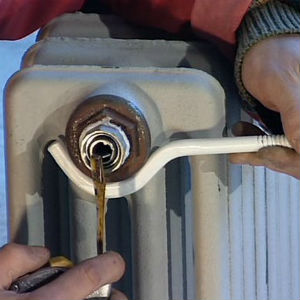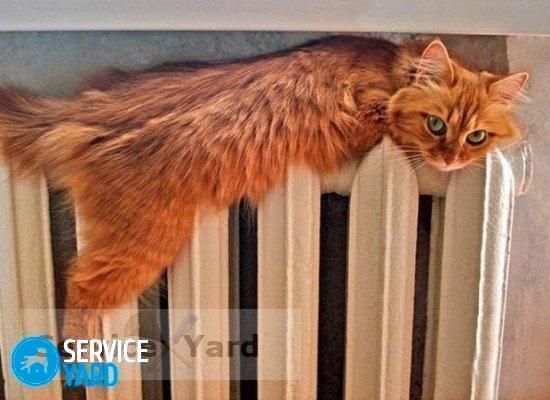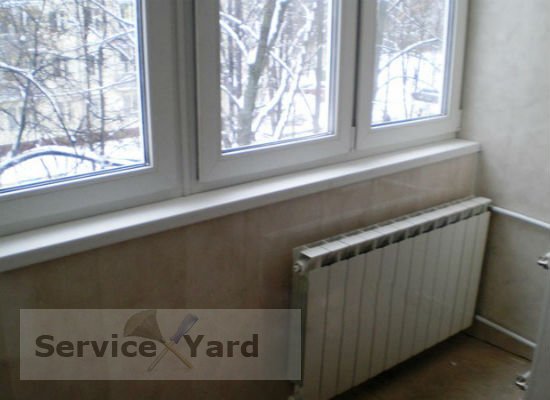Heat exchanger cleaning

Cleaning the heat exchanger is a rather complicated and time-consuming process, but it is very necessary and should be carried out every 2-4 years. This procedure will ensure effective and efficient operation of the heating equipment and will extend its service life. But, in some cases, cleaning must be carried out much earlier, due to improper use of equipment or due to poor quality of water in the boiler plant.
to contents ↑When should the heat exchanger be cleaned?
 You can determine when to clean the column by the following signals:
You can determine when to clean the column by the following signals:
- it periodically turns on and off independently;
- heat protection sensors start to work;
- water began to heat much weaker;
- the head of hot water supply has significantly decreased.
Heat exchanger cleaning methods
In order to clean the heat exchanger from scale, there are various methods, such as:
- in-place;
- collapsible;
- chemical;
- mechanical;
- hydrodynamic.
When choosing a sediment remover in a heat exchanger, the following factors must be considered, such as:
- degree of pollution;
- features of its design;
- properties and nature of the substances that formed the deposits.
to contents ↑Important! For soldering systems, the collapsible method is not used, and for heavy contaminants, the indiscriminate chemical cleaning of the heat exchanger is not applicable.
Mechanical and chemical method
Mechanical cleaning of the heat exchanger is the removal of deposits using hand tools. It is carried out by direct contact of the inventory with a contaminated system. This method is carried out by disassembling the heat exchanger.
To clean the disassembled system of scale, such equipment as a metal brush or a scraper is well suited - they quite effectively remove it.
Important! The mechanical method is the most time-consuming in its application, but in combination with the chemical method, the process is greatly facilitated and its efficiency is increased.
Chemical purification in combination with mechanical is as follows:
- Disassemble the heat exchanger.
- Remove contaminated parts.
- Take a metal brush or scraper.
- Scrape off the scale from the parts.
- Pour the cleaning solution into the container.
- Put machined parts into it.
- Leave them in the solution for several hours.
- Remove from solution.
- Rinse with clean running water and dry.
- Mount all the elements back into the system.
to contents ↑Important! This method is great for collapsible tubular and plate heat exchangers.
Hydrodynamic method
Hydrodynamic cleaning of parts from scale is carried out using running water. The main condition is its supply by a strong jet under high pressure.
 This method involves disassembling the system, but if you are going to clean the tubular heat exchanger, then this is not necessary.
This method involves disassembling the system, but if you are going to clean the tubular heat exchanger, then this is not necessary.
You can increase the washing efficiency using various nozzles. They contribute to the fact that water jets are distributed in the right direction and at the required pressure. Narrow nozzles with many holes are most often used, in particular they are used for flushing pipes.
Important! The hydrodynamic cleaning efficiency is 98% and it is absolutely environmentally friendly.The uniqueness of this method is that there is no need to use any chemical agents, which means that their influence will in no way affect the strength of the material and the duration of its operation. If you have devices for such cleaning of the heat exchanger, feel free to use them. In this case, you are guaranteed to get a high-quality result and will not be wondering for several years how to clean the heat exchanger.
Advantages of the hydrodynamic method
- The surface of the heat exchanger is retained.
- Very high-quality plaque removal.
- Good method performance.
- Absolutely safe process.
Chemical method
Dry cleaning is carried out using chemical reagents that turn the scale into a soluble form. This makes it possible to remove contaminants from pipes and plates of equipment along with the solution. This method is good for preventative cleaning or for low to medium pollution. It can be used both in a collapsible and non-folding way.
When disassembling equipment, contaminated parts are placed in a container with a chemical solution and remain there for a couple of hours, then they are thoroughly washed with clean water and screwed back into the system.
In the CIP method, special plants are used to pour a chemical substance that dissolves hardened deposits into a contaminated system.
The disadvantages of the chemical method:
- After 3-4 washes, metal wear occurs.
- Quite a high cost of specialized chemicals.
- With inaccurate use, you can get a chemical burn.
- Large amounts of flushing water are consumed.
- A large number of drains that contain toxic substances.
Cleaning the heat exchanger with folk methods
In order to carry out preventive cleaning of heating equipment with improvised means, perform the following sequence of actions:
- Turn off the gas.
- Unscrew the water pipes.
- Remove the column from the hinges.
- Put her upside down.
- Take a rubber bulb or syringe.
- Fill it with vinegar.
- Pour 0.5 liters of vinegar into the system.
- Wait a few hours.
- Reinstall the equipment.
- Connect the water pipe.
- Place a basin under the column to drain the water.
- Turn on the water.
- Lower it until it is clean.
- Connect all other parts.
Stock footage
We hope that our tips came in handy and now you know how to clean the heat exchanger, and you can perform this procedure yourself. To prevent future interruptions in the functioning of the system, regularly perform preventive flushing. In this case, your equipment will last you a long time.
- How to choose a vacuum cleaner taking into account the characteristics of the house and coatings?
- What to look for when choosing a water delivery
- How to quickly create comfort at home - tips for housewives
- How to choose the perfect TV - useful tips
- What to look for when choosing blinds
- What should be running shoes?
- What useful things can you buy in a hardware store
- Iphone 11 pro max review
- Than iPhone is better than Android smartphones



